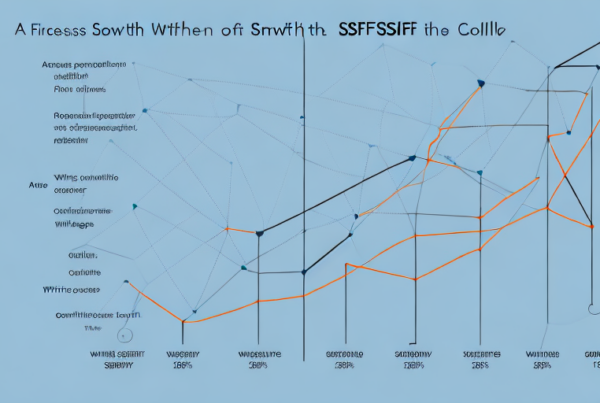Australia has witnessed a significant rise in self-managed super fund (SMSF) businesses in recent times. Many investors are seeking more control over their retirement funds and are finding SMSFs as a better alternative to traditional super funds. In this article, we will delve into understanding SMSFs, the growth of SMSFs in Australia, the role of technology in SMSF businesses, and the regulatory environment surrounding SMSFs in Australia.
Understanding Self-Managed Super Funds (SMSFs)
Before diving into the growth of SMSFs in Australia, let’s understand what SMSFs actually are. An SMSF is a private superannuation fund that you can manage yourself. In SMSFs, you typically have less than five members, and all members are either trustees or directors of the trustee company. SMSFs are regulated by the Australian Taxation Office (ATO), and they provide a range of investment options, including Australian and international shares, property, and cash investments.
What is a Self-Managed Super Fund?
A self-managed super fund (SMSF) is a type of super fund where the members are also the trustees. This means the members have full control over the fund’s investment strategy, management of investments, and the tax liabilities associated with the fund. SMSFs can have up to four members, and they are regulated by the Australia Securities and Investments Commission (ASIC).
One of the benefits of SMSFs is that they allow members to tailor their investments to their specific needs. For example, if a member has a particular interest in a certain industry, they can invest in that industry through their SMSF. Additionally, SMSFs can provide greater control over tax planning, allowing members to structure their investments in a way that minimizes tax liabilities.
How do SMSFs differ from traditional super funds?
The key difference between SMSFs and traditional super funds is the level of control that members have over their investments. In traditional super funds, the investment strategy is determined by the fund manager. In contrast, SMSF members have full control over the funds’ investments, and they make all the investment decisions. SMSF members can invest directly in shares, property, and other investment options that are not available in traditional super funds.
Another difference between SMSFs and traditional super funds is the cost. SMSFs can be more expensive to set up and maintain than traditional super funds. SMSFs require a greater level of expertise to manage, and members may need to hire professionals such as accountants and financial advisors to help them manage their fund.
Benefits and drawbacks of SMSFs
There are several benefits of having an SMSF. The main advantage of an SMSF is the level of control that members have over their investments. Members can choose how to invest their money, where to invest, and how their fund is managed. SMSFs also offer greater flexibility in terms of investment choices than traditional super funds, which may not provide access to certain investments.
However, SMSFs also come with certain drawbacks. The main disadvantage is that SMSFs require more time and effort to manage than traditional super funds. SMSF members are responsible for managing their fund’s investments, compliance, and administration. This can be time-consuming and may require financial and legal expertise.
Another potential drawback of SMSFs is the risk involved. SMSFs are not protected by the government’s guarantee scheme, which means that if the fund fails, members could lose some or all of their savings. Additionally, SMSFs are subject to strict regulations and compliance requirements, which can be difficult to navigate.
Despite these drawbacks, SMSFs continue to be a popular choice for many Australians. According to the ATO, there were over 600,000 SMSFs in Australia as of June 2020, with over 1.1 million members. This represents a significant increase from previous years, highlighting the growing popularity of SMSFs as a retirement savings option.
The Growth of SMSFs in Australia
Since their introduction in 1994, SMSFs have become increasingly popular among Australians. In fact, SMSFs now make up around one-third of all Australian super funds. Let’s look at the historical trends, driving factors, and demographics of SMSF users.
Historical trends in SMSF popularity
SMSFs have been popular among Australians for over two decades, but their popularity has grown significantly in recent years. The number of SMSFs in Australia has increased from just over 10,000 in 1999 to over 600,000 in 2021. This indicates that there has been a growing trend of investors choosing to manage their retirement savings.
The growth in SMSFs can be attributed to a number of factors. Firstly, there has been a general trend towards self-managed investments, as people become more confident in their ability to manage their own finances. Secondly, the rise of technology has made it easier for people to manage their own investments, with online platforms and tools providing greater accessibility and control. Finally, the current economic climate has led many people to seek alternative investment options, and SMSFs provide a viable alternative to traditional super funds.
Factors driving the growth of SMSFs
There are several reasons why SMSFs are becoming more popular in Australia. First, SMSFs provide greater flexibility in investment options than traditional super funds. SMSF members can choose to invest in a range of assets, including shares, property, and other less traditional investments. This means that SMSF members have the potential to earn higher returns on their investments, as they are not limited to the investment options offered by traditional super funds.
Second, SMSF members have greater control over their funds and can make investment decisions based on their own goals. This means that SMSF members can tailor their investments to suit their individual needs, rather than being subject to the decisions of a fund manager. This can lead to a greater sense of ownership and control over their retirement savings.
Finally, SMSFs offer potential tax advantages for members, particularly for high-income earners. SMSF members can take advantage of tax concessions and deductions, which can help to reduce their overall tax burden and increase their retirement savings.
Demographics of SMSF users
The typical SMSF member is over 50 years of age and has a high net worth. Many SMSF members own assets such as property and shares, which they typically include in their SMSF. It is common for SMSFs to be set up by family members as a way to manage their retirement savings collectively.
However, there has been a growing trend of younger people setting up SMSFs, particularly those who are self-employed or have a high level of financial literacy. This suggests that SMSFs are becoming more accessible to a wider range of people, and may continue to grow in popularity in the coming years.
In conclusion, SMSFs have become an increasingly popular option for Australians looking to take control of their retirement savings. The flexibility, control, and tax advantages offered by SMSFs have made them an attractive alternative to traditional super funds, and their popularity is likely to continue to grow in the future.
The Role of Technology in SMSF Businesses
Technology has played a significant role in the growth of SMSF businesses in Australia. The use of technology has revolutionized the way SMSFs are managed, making it easier and more efficient for SMSF members to manage their investments and transactions. Let’s look at how digital platforms, automation, and cybersecurity have impacted SMSF businesses.
Digital platforms for managing SMSFs
Many SMSFs have turned to digital platforms to manage their investments and administration. These platforms offer increased efficiency and help SMSF members manage their investments and transactions more easily. Digital platforms have also made it easier for SMSFs to invest in assets they traditionally would not have had access to. This has opened up new investment opportunities for SMSFs, allowing them to diversify their portfolios and potentially increase their returns.
Furthermore, digital platforms have made it easier for SMSF members to stay up-to-date with their investments. With real-time data and analytics, SMSF members can make informed decisions about their investments and adjust their portfolios accordingly.
Automation and efficiency in SMSF administration
Automation has also played a significant role in making SMSFs more accessible to everyday Australians. By automating many administrative tasks, SMSF members can reduce the amount of time and expertise required to manage their funds. This has made SMSFs more accessible for those who may not have the time or expertise for traditional super funds.
Automation has also improved the accuracy and reliability of SMSF administration. With automated processes, there is less room for human error, reducing the risk of costly mistakes. This has also made it easier for SMSFs to comply with regulatory requirements, ensuring that they meet legal obligations and avoid penalties.
Cybersecurity and data protection for SMSFs
As SMSFs increasingly rely on digital platforms, keeping member data secure has become a top priority. SMSFs must implement robust cybersecurity measures to protect against cyber threats and data breaches. This ensures that member data remains confidential and secure.
Some of the cybersecurity measures that SMSFs can implement include two-factor authentication, data encryption, and regular security audits. SMSFs must also ensure that their digital platforms comply with regulatory requirements for data protection, such as the Australian Privacy Principles.
Overall, technology has played a crucial role in the growth and success of SMSF businesses in Australia. By leveraging digital platforms, automation, and cybersecurity, SMSFs can offer their members a more efficient and secure way to manage their investments and transactions.
Regulatory Environment for SMSFs in Australia
Finally, it is essential to understand the regulatory environment surrounding SMSFs in Australia. Let’s look at the role of the Australian Taxation Office (ATO), compliance requirements, and recent changes in SMSF regulations.
Australian Taxation Office (ATO) oversight
SMSFs are regulated by the ATO, which oversees their compliance with super fund regulations. The ATO has strict rules around SMSF administration and investment management, and non-compliance can result in significant penalties.
Compliance requirements for SMSFs
SMSFs must adhere to several compliance requirements to ensure they remain compliant with regulations. These include appointing an approved SMSF auditor, keeping detailed records, and ensuring that the fund’s investment strategy is appropriate for the fund’s objectives and risk profile. SMSF members must also keep the fund’s assets separate from their personal holdings.
Recent changes in SMSF regulations
Recent changes in SMSF regulations have aimed to increase transparency and fairness in the superannuation system. In 2019, the government introduced a Super Guarantee Amnesty, which allowed SMSFs to disclose any unpaid super amounts without incurring penalties. Additionally, several proposed changes to SMSF regulations are currently under review, including the introduction of Retirement Income Covenant to ensure better retirement outcomes for Australians.
Conclusion
The rise of SMSFs in Australia has been significant in recent times, with many investors opting for more control over their retirement investments. SMSFs offer benefits such as greater flexibility, control, and potential tax advantages, but they also require more time and effort to manage than traditional super funds. Technology has played an essential role in making SMSFs more accessible to everyday Australians, while the Australian Taxation Office oversees compliance and regulation. As Australia’s superannuation system continues to evolve, SMSFs will undoubtedly continue to play an essential role in providing Australian investors with greater control over their retirement savings.




